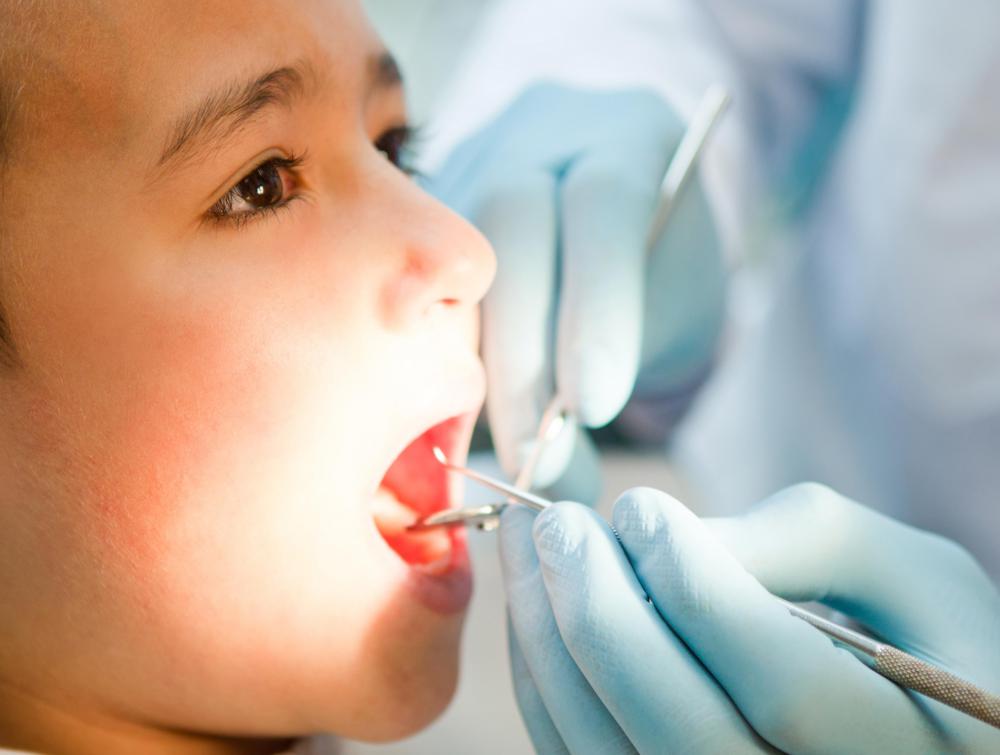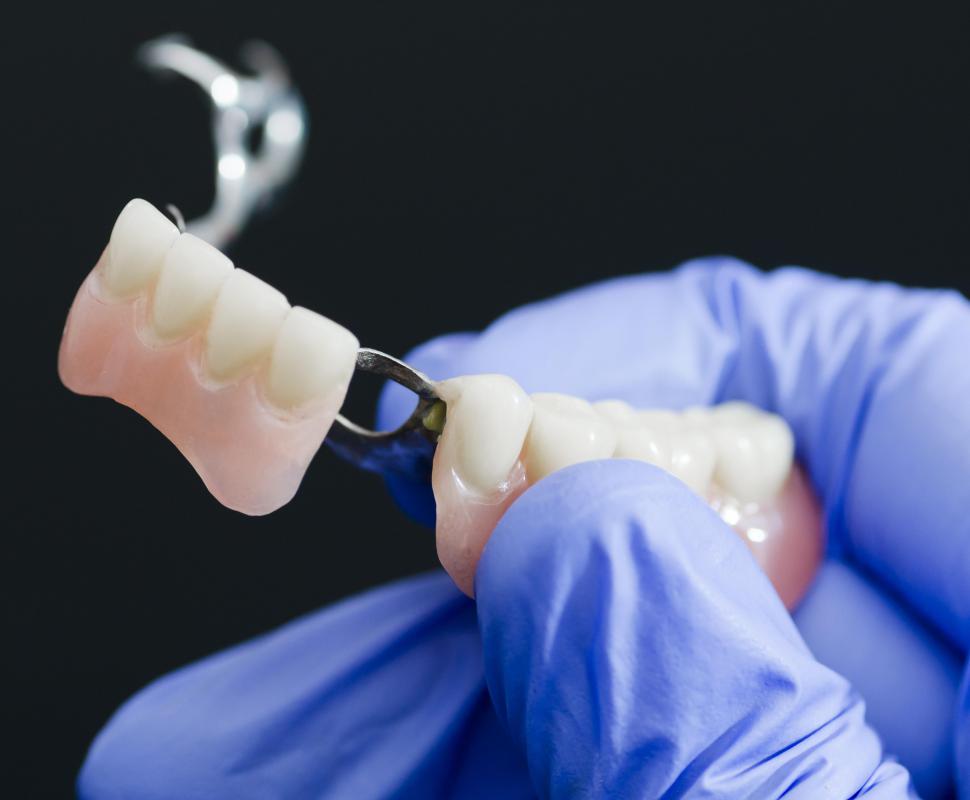At WiseGEEK, we're committed to delivering accurate, trustworthy information. Our expert-authored content is rigorously fact-checked and sourced from credible authorities. Discover how we uphold the highest standards in providing you with reliable knowledge.
What Is Torus Mandibularis?
Torus mandibularis is a bony growth, usually nodular, along the lower jaw. Such growths appear on the inside of the bone, just below the teeth, and often develop in pairs on either side of the mouth. Most tori are benign, but they can occasionally cause problems that necessitate more active treatment. A dentist or oral surgeon can conduct an evaluation to determine if a patient’s particular case is in need of special attention.
The causes for these growths are not well understood. Local stress appears to be a factor, as this condition is more common in people who grind their teeth or have problems with the alignment of the teeth and jaws. They grow slowly over time, and may appear very early in childhood in some cases or later on in life, sometimes after a period of stress. If removed, the growth can recur, illustrating that it is the result of an ongoing process in the mouth rather than a one-time error of bone development.

Size can vary radically. Sometimes a torus mandibularis is a relatively small bump, while in other cases the growths are large enough to touch each other. Patients with larger growths can experience discomfort because it may be hard to chew or swallow. Small growths are extremely common, particularly in men, and are not usually a cause for concern unless they start growing very rapidly or the patient notices changes in the color or texture of the growth.

In some patients, it can be hard to fit a denture with a torus mandibularis. Others may develop ulcerations in the tissue over the growth which can cause infections and oral pain. Concerns may arise about airway management in some cases as well, because the growths could make it hard to control a patient’s airway in an emergency. These situations may call for treatment.

Surgery can be used to remove a torus mandibularis and smooth the bone. This is sometimes effective, although in other cases the growth may appear again, taking months or years to regain its former size. After surgery, patients may be advised to have regular checkups to monitor the site so they can determine if the growth is going to come back. This history of torus mandibularis can also be noted in a patient’s chart so future dental health providers are aware of the issue and know to check for it when they evaluate the patient.
AS FEATURED ON:
AS FEATURED ON:















Discussion Comments
@ Anon302085: Please note that this is an article on torus mandibularis, and not some soap induced penis rash. I strongly doubt that soap would have caused torus mandibularis, and if it had, I really doubt that it would affect your penis. Please don't leave out of place comments here.
I have these exact symptoms. I have been stressed recently over a rash I developed on my penis which was caused by rubbing soap on the head and when I washed the soap off, it had a red itchy patch and blister. Along with that, it also had white spots on the under side of my foreskin.
I am negative on all STIs, STDs and HIV, which of course, is a relief. I have no symptoms of any of the aforementioned, either. So I believe stress triggered this condition of mine.
Post your comments